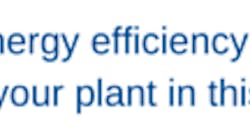According to the U.S. Department of Energy (DOE), pumping systems use a significant amount of energy in process plants. To be more specific, let’s look at petroleum refining — pumping systems consume almost 60% of the total energy used by machine drives (mechanical rotating equipment). In the chemicals sector, this number is still a respectable 28–30%. So, shouldn’t we take an energy efficiency “magnifying glass” to our pumping systems and reap some benefits from possible low- or no-cost measures?
The type of analysis you should perform to understand and evaluate a pumping system is no different than that for other energy-intensive systems. A systems approach will always lead to a truly optimized configuration; as my pumping system expert friends say, “it will get you the best wire-to-water efficiency.” More importantly, it will ensure that we do not fall into possible engineering traps relating to fluid mechanics!
Every pumping application starts with understanding the relationship between flow and head (pressure differential) for the system and process requirement. This also is known as the “system curve.” Once that’s properly understood, the next step is to identify a pump (or pumps) that will meet the system demand. If you are evaluating the current system in place, then your pump already is defined and you will need to get the pump curves. Overlaying the system curve on the pump’s curve provides a significant amount of insight on the pumping system operation.
To learn more, read "Pump Out Energy Inefficiencies" from Chemical Processing.
